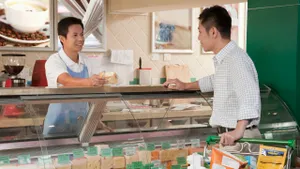PCC Scores Highest With Seafood Sustainability
SEATTLE — When Greenpeace published its first Carting Away the Oceans report in 2008, the organization gave failing grades to all of the 20 U.S. food retailers
May 30, 2011
MATTHEW ENIS
SEATTLE — When Greenpeace published its first “Carting Away the Oceans” report in 2008, the organization gave failing grades to all of the 20 U.S. food retailers it analyzed. This year, 15 chains passed — one indication of the significant progress that the supermarket industry has made with regard to the sustainable seafood movement during the past three years. Still, no company on the list got a score higher than Safeway's 6.5.
To get a sense of what the future may hold for sustainable seafood policies, SN spoke with PCC Natural Markets in Seattle. Although the nine-unit cooperative wasn't large enough to be included in the CATO report, Greenpeace, using the same grading system, gave PCC's seafood program the single highest score in the country — a 9.4. Not an easy feat.
PCC has been working on the issue a little longer than most companies. It became the first official retail partner of the Monterey Bay Aquarium's Seafood Watch program in 2004, and it has since discontinued all seafood items that Monterey Bay considers red-listed, including farmed salmon and imported shrimp, according to Eli Penberthy, PCC's public affairs specialist and sustainable seafood expert. All salmon sold at PCC is now wild caught, and all shrimp is purchased from U.S. sources.
“We've extended that to every department in our store where you would find seafood,” Penberthy said, including sushi cases and the frozen food aisle.
“Canned seafood was a huge challenge, because tuna is such a problem. We went thorough, SKU by SKU, and made sure that we're carrying only the most sustainable tuna.”
Traceability remains a major challenge in the seafood industry, she noted. A yellowfin tuna, for example, could be one of the better sustainable options available, provided that it was pole or troll-caught in a well-managed fishery. Or, it could be among the worst offenders, if fishermen were using a tuna purse-seine — a method which often injures or kills dolphins, juvenile tuna and other bycatch.
PCC has been talking more closely with its seafood distributors, demanding paperwork that explains where fish came from and how it was caught.
“We work with four or five distributors here in Seattle, and I think we're raising the bar on what they're sourcing, because we're asking very detailed questions,” Penberthy said. “We're pushing them to find answers. … It's new for them, but they're coming around to it.”
Consumer awareness of the sustainable seafood issue seems to be increasing at a rapid pace, both with PCC's members and the larger public, she said, and store-level education efforts have played a key role.
In addition to the Monterey Bay Seafood Watch pocket guides that are always available for shoppers, “we make sure that the people who work at our seafood counters are knowledgeable about where the fish are coming from and can answer questions and help on that front,” Penberthy said. “And on our website we have all types of information on sustainable seafood.”
About the Author
You May Also Like






